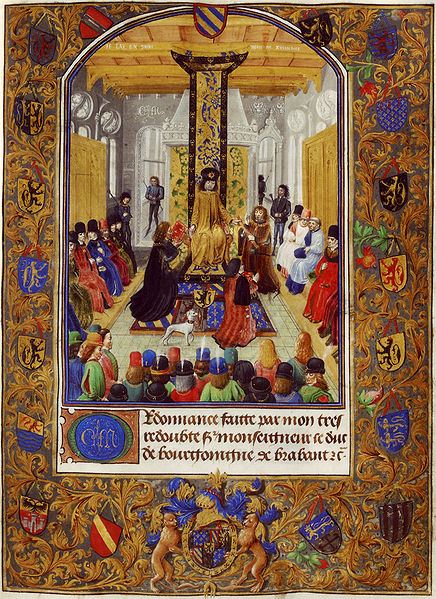
Duke Charles the Bold of Burgundy appoints the officers of his by ordinance, he gives them a mace and a copy of the military order.
The strength of this feudal bond leads James Westfall Thompson to observe that “no more intensely personal form of government was ever conceived than that of feudalism, and the cardinal principle of it was mutual responsibility.”(1)
That is to say, it was not a unilateral bond of submission, but a highly personal bond in which both parties had to abide by the terms of an agreement as in a partnership with established obligations and limits. From this strong bond, something entirely new was created that integrated ancient barbarian notions of personal loyalty with a Christian order inspired by the Gospel and the desire for Christian charity. The result was a novel yet vast network of personal hierarchical relationships and associations whose intersecting threads wove a formidable social fabric throughout all levels of society.
Above all, it created a class of leaders—true and numerous elites—who found themselves obliged to govern and seek after the common good. They served to interpret, distill, and direct the impulse of the vital flux of those who solicited their aid. Moreover, this system found a solution for those individuals and families overwhelmed by problems beyond their ability to resolve.
As long as the two parties of this bond remained united, living side by side and sharing life’s vicissitudes, this society proved nearly indestructible. Yet, when this bond was broken and the two parties separated, as in the times of the absolutist kings, enmities arose, preparing the ground for revolution and class struggle. 
(1) James Westfall Thompson, Economic and Social History of the Middle Ages: 300-1300 (New York: Frederick Ungar, 1959), 2:705.
John Horvat II, Return to Order: From a Frenzied Economy to an Organic Christian Society—Where We’ve Been, How We Got Here, and Where We Need To Go (York, Penn.: York Press, 2013), 194.












